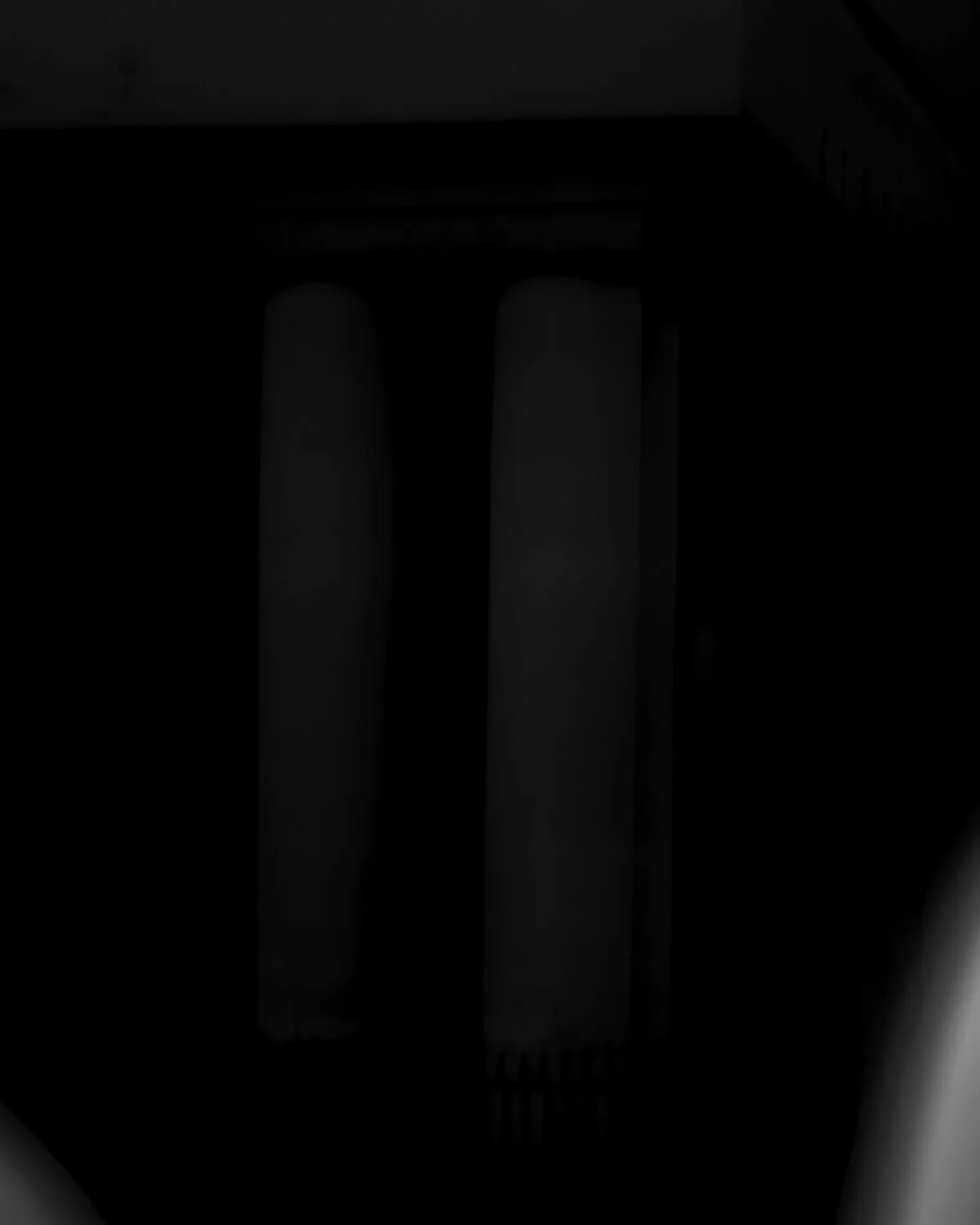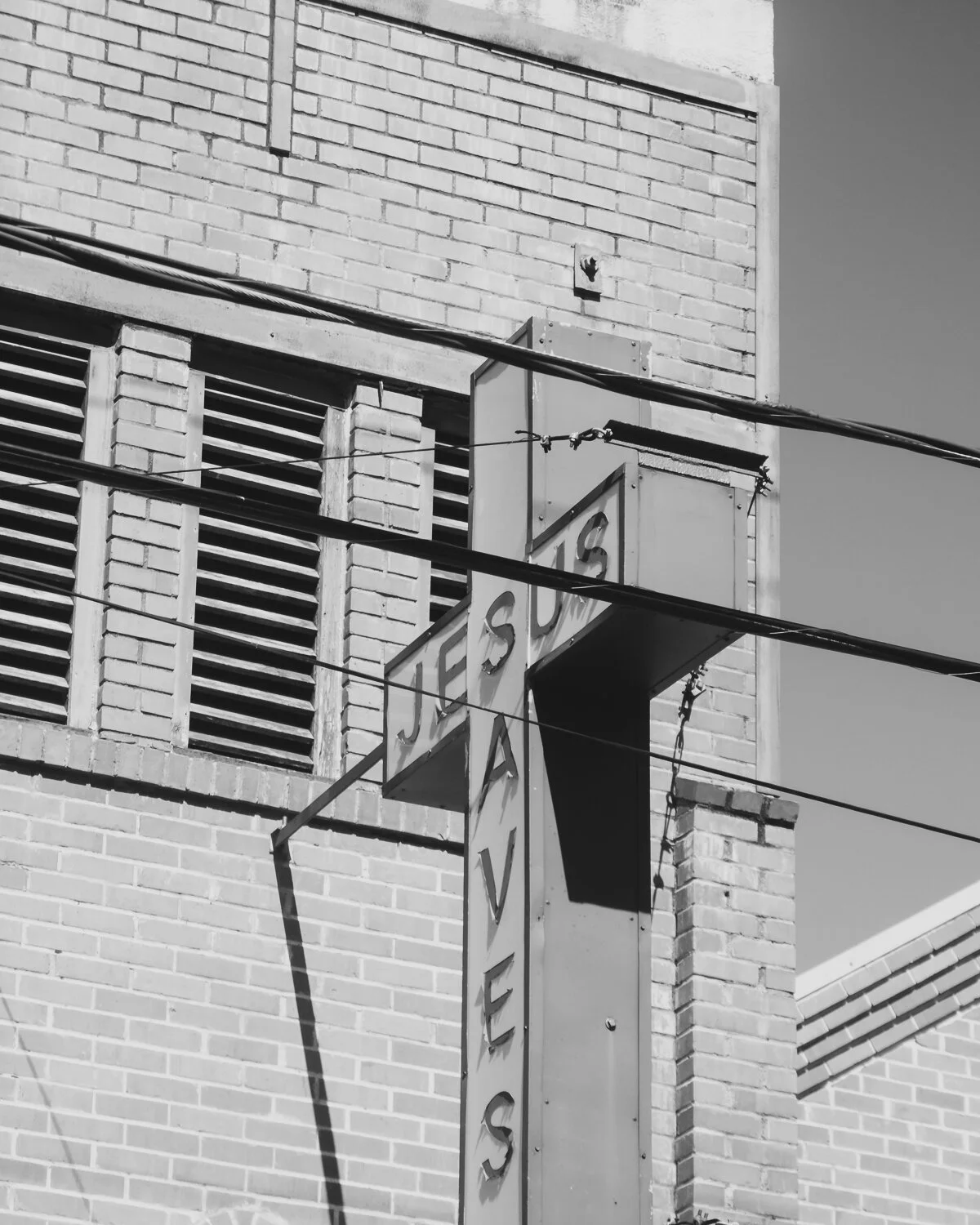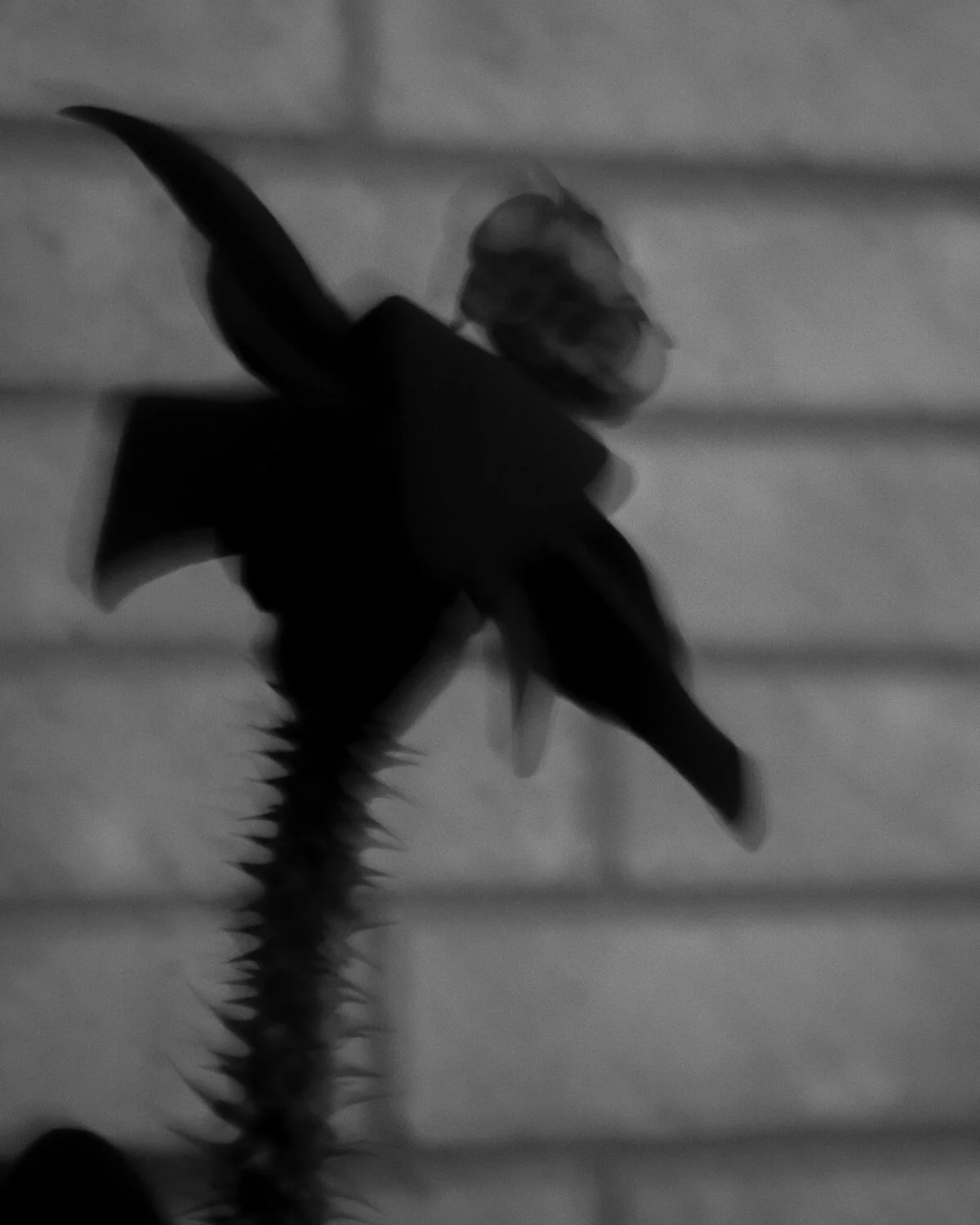Weaknesses : Andy Pham
PC: Andy Pham
Andrew D. McClees (ADM): For those who are not familiar, could you introduce yourself and your work?
Andy Pham (AP): I’m a photographer and writer. I’ve spent most of my life in the New Orleans area, but also lived in Europe (Czech Republic) for three years, which was a really formative experience for me and kind of changed my life in many ways. I’ve been back in America for the past few years, and have been making work that on one hand, is constantly changing, perhaps stylistically, but on the other, is more or less rooted in the same general themes, personal emotions and instincts.
ADM: We're talking about your series in progress, “Weaknesses” - which, per your description on your webpage is a "long-term, ongoing work in progress examines human weakness and fragility, particularly in the form of mental illness, and the various ways in which it can be represented through the perception of our surroundings." Could you share what the inspiration was for the project, and what the end goal for it would be?
AP: The project “Weaknesses” is the most personal work I’ve been making. It’s mainly a response to my own experience with mental illness, as well as that of some of the people close to me. It’s been a years-long endeavor, in part because as I learn more about my own mental and psychological conditions and attempt to piece together who I am, who I’ve been, who I want to be, etc. and to process my own journey through mental illnesses, I find that the photography I make changes subtly as well.
The end goal would likely be a print publication of some kind, but I don’t have a set timeline in mind. I think it depends on finding the right time and opportunity whenever I’d feel like the work feels like a final product, or at least at a natural stopping point, to work on making and releasing something in print.
PC: Andy Pham
ADM: Print is fascinating - Do you think there's a specific character or value that print or a photobook would imbue or enhance "Weaknesses" with - and can you speak on how that format would work with the photographs, or the narrative around “Weaknesses?”
AP: I’ve always seen print/books as the end game for photographs and specifically series of photos or larger projects. As mentioned before, I just really enjoy the tangibility and tactility of these physical objects as opposed to looking at something on a screen. Also I think editing/sequencing and just having the final product in print form adds to the element of spending (more) time with the images in a book versus the more fast paced consumption of images that I think many people are used to with digital consumption.
ADM: So, from that - what final form do you have in mind for “Weaknesses”? a book, or zine - or perhaps an installation of a print series? Are there any particular considerations that you've taken into account while making the images for the project?
AP: I don’t want to tie myself to anything super concrete, as anything can happen really. At this point I’d like to keep it open, but I definitely think something in print and substantial feeling would be a final product I can be proud of.
PC: Andy Pham
ADM: Depression and mental illness look different to everyone - what are you looking for when you make your photographs on the topic for this project? Are there any motifs that you find are particularly idiosyncratic to you?
AP: Sure, I respect and certainly understand that mental illness assumes different forms in each unique individual; no two minds are the same. For example, I’ve tried psychotherapy but realized it just wasn’t for me. I tend to work through things more independently, and photography helps me to do that in almost therapeutic ways. You can say that photography is one of my forms of self-therapy. As far as subjects or motifs, I don’t think that I tend to look for specific things that reflect my psychological states. It’s more so the other way around; how I’m feeling or what I’m trying to sort out at any particular moment might dictate or affect what I end up photographing. Sometimes this means that I don’t photograph at all, given the nature of mental illness and how it can really be paralyzing to one’s ability to do anything at all.
I guess if anything, I tend to be drawn more to photograph in places that are perhaps more desolate, or that don’t include a lot of people or any people at all. I don’t ever make portraits at all. I find that the subjects I am drawn to are usually objects or scenes. I probably do have one repeating motif in particular: discarded objects that are left on the ground by people. I find that there is so much mystery in these things that are left behind by someone you’ll probably never know or meet.
PC: Andy Pham
ADM: That Definitely tracks with me, and my own experiences. Did you have any particular influence to or on your photographic approach for the project - both on the portrayal of mental illness and your own imagemaking process? These influences can be non-photographic, if that broadens the question for you?
AP: No particular influences really. I think more generally speaking I am probably influenced by photographers who have a very keen eye for detail – smaller, minute things that would go completely unnoticed to the average eye. One photographer in particular who embodies this for me is Phoebe Kiely, whose work was a major influence on me in shifting to primarily black and white, as well as just inspiring me to continue to train my eye to look for those things.
ADM: In addition to your photography, you're also a writer. Do you find there's a natural connection between writing, or words, and photography? If so, how, and if not, why not?
AP: Definitely. At least for me personally, I think there is a connection. I keep multiple notebooks at any given time where I’m constantly writing things down, usually nothing serious or long form, but just kind of a way to keep my mind organized and compartmentalize different things and ideas on paper. The tactility of writing with a pen and paper is always something I’ve enjoyed and even find comfort in. I find the same tactility exists in having a camera in your hands, looking through a viewfinder, pressing the shutter, etc.
Also, I’ve realized that the way I photograph is very instinctive in that I’m almost never having a premeditated idea of what kind of pictures I want to make. When I see a subject I want to capture or a photo that I feel I “need” to make, it’s usually instinctive and instant. With my writing, I think I also write very instinctively and then take a lot more time to edit the text afterward. Having an opportunity to write about photography and photobooks and contribute to a platform (C4 Journal) is great because it’s something I am passionate about anyway, which makes the ideas and words come out a lot more easily.
PC: Andy Pham
ADM: When analyzing or writing on photobooks, you mention an instinctual approach - what do you find yourself drawn to writing on in the book format, and does it mirror your approach or focus in the images themselves? Or, do you find that as a writer or critic your concerns are much different than your focuses are in your photographs?
AP: There is definitely an overlap, at least for me. I’ve found that the books I write about, or work that I am interested in writing about, often deal with human emotions in some way. In this sense I feel like my interests naturally gravitate more to that general area. I’m interested in work that is influenced by or speaks on the emotional, psychological, and sociological aspects of existence, I suppose.
ADM: In "Weaknesses" - is there a particular image or sequence within the project that you'd present alone to explain it to someone else? Why that specific image - I know you've mentioned the discarded random items and abandoned places - but is there anything hyperspecific?
AP: It might be, as of now, one particular image which was a result of a lot of manipulation, both accidental and intentional. It started with a color film photograph that I messed up the processing for and couldn’t get the colors right with, so I made it black & white and then through some printing errors, the image became sort of split and cropped; in the end I ended up with a final image that I really like. I think the balance of mishaps and intention are a good reflection of mental and emotional states, where as humans we’re always in this state of flux between our past, present and future selves, and trying to figure out how to deal with trauma, triggers, etc. There is some symbolic imagery within the picture itself as well: the shape of a cross, a sign with the inside missing, a hanging wire, which can be interpreted by the viewer in different or more personal ways.
(Ed Note: The second image presented in the article)
PC: Andy Pham
ADM: As someone who writes about, and likely thinks a lot about photobooks - what do you think the key, defining features are of the medium or art object, and do you find yourself seeking them out in your work?
AP: I think editing and sequencing is crucial. Having an edit and sequence that fits whatever you’re trying to communicate with the pictures. This might not be explicit or obvious to anyone viewing the book, but it should at least make sense and feel right to the maker, I’ve definitely tried forcing pictures together into a sequence in the past that just didn’t feel right (to me), and that’s when I knew I had to scrap the work or at least come back to it much later. Also, design is important in that many books nowadays have a very copy and paste kind of aesthetic – essentially just pictures in the middle of paper with white space around them. I like books that feel special in some kind of way I guess. Finally, I think the work should be thought provoking and lead the viewer to think about, question, or at least spend some more time outside of simply looking at the pictures; the best photobooks to me catalyze some form of questioning of perspectives or a wider discussion of a topic, viewpoint, etc.
PC: Andy Pham
ADM: What advice would you give to someone working on a project about mental health or mental illness? Is there anything that you've learned while working or continuing to work on "Weakness" that you'd like to share?
AP: I guess I’d say that one’s personal mental health always comes first, and shouldn’t be compromised for the sake of creative work or output. Like I mentioned before, some days are just brutal and the last thing I feel able to do is pick up a camera or think about anything related to photography. I think it’s healthy to just listen to your mind and body first and foremost, and don’t force anything.
ADM: From Erin Cross: If there is a single photo story that you can work on in your lifetime, what would that be and how would you create your images for it?
AP: This is a tough one, I’ve never really thought about it before. I think maybe I’d like to document Vietnam, where my parents are from, in a way that is unique or meaningful to me, whatever that might be. I’ve only been there once when younger and didn’t have a full fledged interest in photography, so I’d probably like to go back and spend time photographing there.
PC: Andy Pham
ADM: What question do you have for the next photographer? (You can answer it yourself if you'd like.)
AP: Do you think there is any value in the “hierarchy” of the photo world, or art world in general, in terms of the division between “gallery artists”, big publishers, etc. and the rest of us trying to just make work that means something personally? In other words, do you think there are pros and cons to both, or do you think there is anything lacking on either side of this divide?
ADM: Thanks so much for the interview! Where can we see more of your work? both photographic and written. Do you have any other parting words or notes?
AP: Thank you for having me! My work can be viewed on my website: subtropicaltrash.biz, or Instagram: @subtropical_trash. Some of my recent writing can be found on c4journal.com with more to come, or follow them @c4journal on Instagram.
Take care of yourselves and others and just do the best you can; it’s all any of us can strive for.








